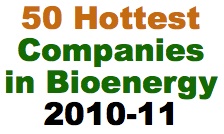 Algae-to-biofuel maker OriginOil, Inc. has been tapped to help build a new Advanced Algae Center devoted to algae commercialization … growing little green microbes where little green men were once rumored to have landed.
Algae-to-biofuel maker OriginOil, Inc. has been tapped to help build a new Advanced Algae Center devoted to algae commercialization … growing little green microbes where little green men were once rumored to have landed.
This company press release says Sustainable Resources, Inc. (SRI) has agreed to contract with OriginOil to plan and deploy the new center on the site of the original Aquatic Species Program in Roswell, New Mexico, scheduled to start sometime next year:
“We just didn’t have the time to reinvent OriginOil’s expert team and sophisticated modeling in the short time available, which made the expense a no-brainer,” said Joe Ortiz, CEO of SRI. “We are also very excited that they intend to use our facility for their own commercial testing and to integrate with other technologies.”
“Like us, algae players are always looking for resources to test and validate their technologies while retaining absolute control,” said OriginOil CTO Brian Goodall, PhD. “There’s also tremendous interest in integrating multi-vendor technologies in a convenient location. So we’re really being paid to help build something that we very much need ourselves. It’s important to add that we will have no role whatsoever in technology selection – this will be an open environment from the start.”
“We are happy to devote our hard-won expert resources to help SRI build a world-class testing and piloting platform for the long term,” said Riggs Eckelberry, OriginOil CEO. “Because we plan to integrate our technology into others’ systems rather than distributing it ourselves, we are focused only on partners who will help us prove ourselves in the field. SRI’s Advanced Algae Center fits our focus perfectly, complementing our first commercial partner, Australia’s MBD Energy.”
Roswell, New Mexico was once the headquarters for the US Department of Energy’s Aquatic Species Program from 1978 to 1996. It is also rumored to be the site where a UFO crashed in the late 1940s. No word if ET plans to be at the new center’s ribbon cutting.









 After defeating a compromise measure proposed by Sen. Max Baucus (D-MT) to extend the Bush tax cuts only for the middle class, the talk on Capitol Hill is now turning to a deal that would keep all of the tax cuts in exchange for extending unemployment benefits.
After defeating a compromise measure proposed by Sen. Max Baucus (D-MT) to extend the Bush tax cuts only for the middle class, the talk on Capitol Hill is now turning to a deal that would keep all of the tax cuts in exchange for extending unemployment benefits. The Vatican has unveiled a new book detailing the Holy See’s solar power initiatives.
The Vatican has unveiled a new book detailing the Holy See’s solar power initiatives. Vatican City, which is a sovereign city-state consisting of about 110 acres with a population of around 800 people, has a goal of meeting 20 percent of its energy needs with renewable sources by 2020, the target date set by the European Union for its members. That is likely to include a fleet of electric vehicles and possibly a solar-powered electric Popemobile. That idea was discussed during last week’s press conference by Cardinal Lajolo and Milan Nitzscke, communications director for SolarWorld.
Vatican City, which is a sovereign city-state consisting of about 110 acres with a population of around 800 people, has a goal of meeting 20 percent of its energy needs with renewable sources by 2020, the target date set by the European Union for its members. That is likely to include a fleet of electric vehicles and possibly a solar-powered electric Popemobile. That idea was discussed during last week’s press conference by Cardinal Lajolo and Milan Nitzscke, communications director for SolarWorld.

